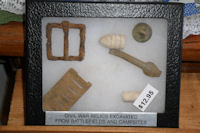
Plate 7: American Civil War relics on sale
Organised metal detecting rallies represent a significant threat to battlefield heritage. With numbers of participating metal detectorists ranging between 30 to 300 and all searching within a relatively small area, they have the capacity to remove large volumes of unrecorded artefacts. Several rallies have taken place on battlefields in the UK over the last 10 years, including Marston Moor, Newbury, Nantwich (Foard 2008, 242) and another close to the site of the Battle of Naseby at Kettering, Northamptonshire, as recorded within the Portable Antiquities Scheme (PAS) database (find ID: NARC-D8D492). Overall there have been few rallies in Scotland, although the trend is growing. Recent events on battlefields include a rally within the vicinity of Bannockburn, Stirlingshire, in 2007 and at Prestonpans, the impact of which has been discussed above. In the 1970s two rallies were organised by the Dundee Club on the battle sites of Killiecrankie, Perth and Kinross, and Culloden, Highland; as the latter is in the ownership of the National Trust for Scotland it is now afforded some protection from metal detecting activity, although unfortunately Killiecrankie falls short of inclusion within the Cairngorm National Park boundary by several hundred metres. At Killiecrankie, approximately 60 metal detectorists were delighted to find, 'a great many musket balls and cannon ball fragments', as well as other objects including buttons and horseshoes (Smith 2005, 58).
Musket balls, as spherical lead pieces, may not be considered of any value in isolation. In some circumstances, however, their historical link to a famous conflict will make battle-related objects desirable as collectable items, as we have seen from the ready sales of projectiles on eBay. Indeed, on one visit by the author to the Battle of Sedgemoor in April 2009, a metal detectorist was spotted within the vicinity of the Memorial Field. When approached to enquire what he was doing, he replied that he was looking for, 'musket balls, but especially a cannon ball'. This issue has been ever present in the US, where Civil War relics are in demand, with some 'relic hunters' prepared to risk heavy fines and even a jail sentence to recover artefacts from battlefields protected by National Park status (Keen 2008; Ferguson 2011). Dealers in Civil War relics may also be found in significant numbers selling their goods on the edge of the battlefield for those who wish to purchase a souvenir of their visit (Plate 7), although this had been an issue long before the arrival of metal detectors (Bannerman 1973). Even in the 19th century, as it is in the 21st century, this practice was regarded very much as theft, and possibly to a higher degree the desecration of a sacred space. In the UK, the discovery of the Staffordshire Hoard in 2009 combined with an economic recession profiled metal detecting as an opportunity to 'get rich quick', with articles about the hobby even appearing in the Financial Times. Here battlefields are included as potential sites, together with hillforts, deserted villages and Roman towns (Watson 2008). Perhaps more concerning was a Daily Record article, which highlighted the Battle of Culloden on a map entitled 'Where to dig up a fortune in Scotland' (Fig. 5) (McQueen 2009, 21). In this light, not only is an increase in activity on sites of conflict a potential threat, but with it an expectation that objects of more intrinsic value than lead bullets are waiting to be discovered on battlefields across the country.
Internet Archaeology is an open access journal based in the Department of Archaeology, University of York. Except where otherwise noted, content from this work may be used under the terms of the Creative Commons Attribution 3.0 (CC BY) Unported licence, which permits unrestricted use, distribution, and reproduction in any medium, provided that attribution to the author(s), the title of the work, the Internet Archaeology journal and the relevant URL/DOI are given.
Terms and Conditions | Legal Statements | Privacy Policy | Cookies Policy | Citing Internet Archaeology
Internet Archaeology content is preserved for the long term with the Archaeology Data Service. Help sustain and support open access publication by donating to our Open Access Archaeology Fund.
File last updated: Thu Feb 28 2013